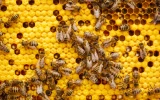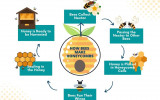How Do Bees Make Hives? (Step-By-Step with Diagram)
Bees are never without their hives because they are vital to the survival of their colony. Building it requires strategic planning and the right location for the bees to flourish. So, how are beehives made?
Worker bees apply a thin layer of propolis to the walls of the beehive. At various phases of hive development, bees will utilize propolis. The bees then chew on the secreted wax until it softens and can form individual cells, which are used to store pollen, nectar, honey, water, and brood.
There's more to creating a beehive. The beehive is an incredible, complex structure made through intricate planning and rigorous work. Maybe we can learn a thing or two from the bees. If you're curious about the detailed steps of making a hive, keep reading.
Summary
- Beehives are mostly made of propolis and beeswax, the majority of which is self-produced by bees.
- Most beehives have a similar design, with the queen cups or cells typically located at the bottom, worker and drone brood cells in the middle, and a honeycomb on top.
- Bees build six-sided tubes into structures called beehives, which are ideal for storing honey.

On this page:
The Bees Making A Hive
Ever heard of the idiom "busy bee"? With a lifespan of about six weeks, they spend their lives working for their colony.
The following steps are the process by which bees build a hive, something many bees dedicate their lives to.
- Worker bees go out to forage for nectar and pollen.
- Nectar and honey both serve as food for the bees, providing energy to work and make wax.
- Wax is produced and collected in order to make honeycomb and cap honey.
- Wax alongside propolis creates the interior of a hive.
- The colony uses the cells of a honeycomb to store supplies and house offspring.
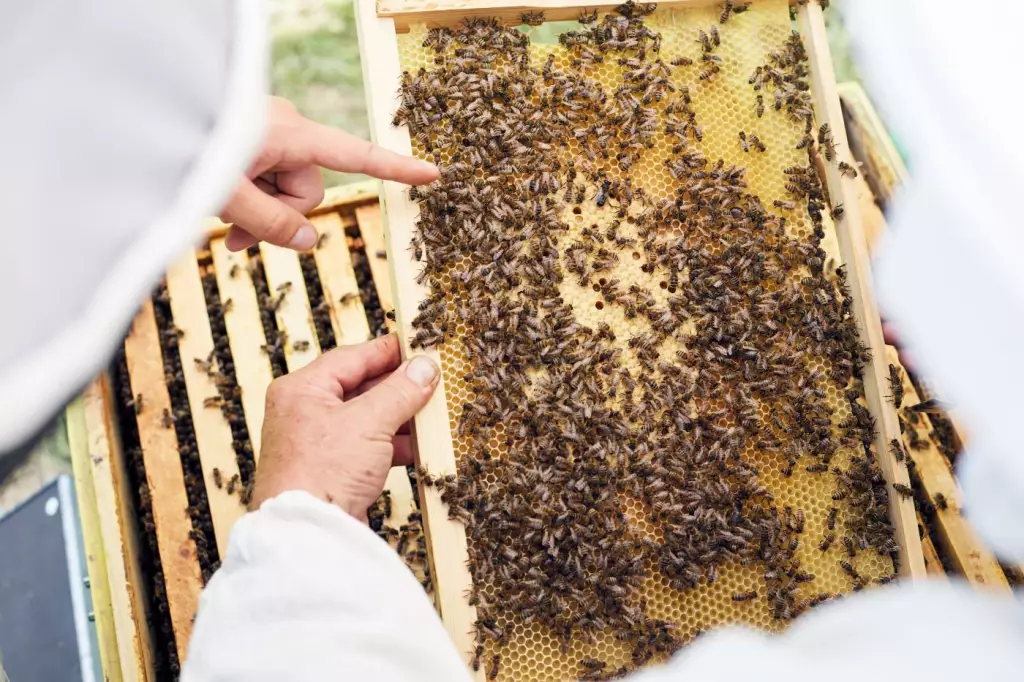
What are Beehives Made Of?
Beehives are artificial structures made of six-sided tubes, great for storing honey. Beehives are chiefly made of beeswax and propolis, most of which are self-made. Honeycomb and propolis are used to make the hexagonal-shaped cells that lie within the structure. The bees utilize propolis for several other purposes as well. Collected plant resins, beeswax, and saliva are the components of propolis.
Propolis, also known as bee glue, can be used as a sealant to fill and seal various parts of the honeycomb. It is also a disinfectant at the entrance of the beehive, keeping unwanted microbes from entering with the bees.
Where Bees Get Wax and Why They Need It
Beeswax is a self-created wax made by worker bees, all of which are female. It is secreted from special glands on the underside of their abdomens when the temperature is right. Wax approximately the size of a pinhead is released from these wax-producing glands. The wax starts out liquid, but solidifies when it comes into contact with air. The solid wax is scale-shaped and collected by other worker bees for honeycomb-making.
Bees need a lot of energy to create a tiny bit of wax. In turn, they eat lots of honey. For every ounce of wax produced, it is estimated that the bee must consume eight ounces of honey. Wax is an important material for bees. Not only is it a component of producing their shelter, but it also serves as a "cap" for the honey stored for winter. All of this is necessary to keep their colony going.
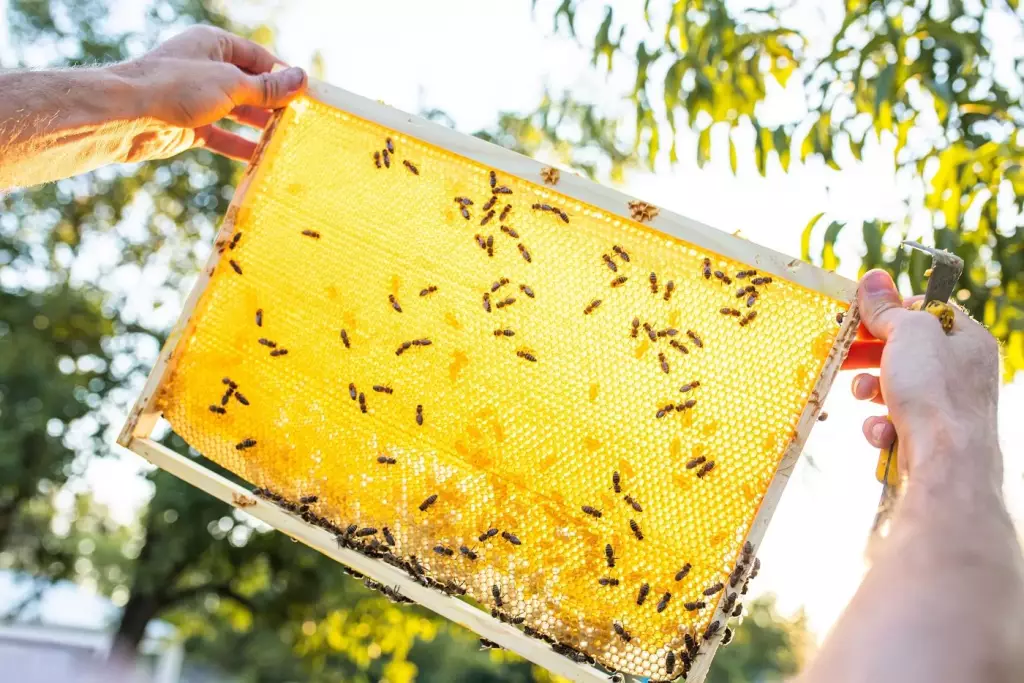
How Bees Make Their Honeycomb
Honeycomb is part of the interior of a beehive. The bees start by preparing the walls with a thin layer of propolis to bind things together for a sturdy base.
Worker bees collect wax scales produced by their colony. Then the bees chew the beeswax till it softens. They then create honeycomb cells with the wax and bound them together. The bees must maintain a warm temperature inside the hive in order to shape the wax into the cells of a honeycomb.
Creating beeswax is not an easy job, so the bees try to make their comb with the least amount of wax possible. Per square inch of a honeycomb, there are about 25 hexagon-shaped cells. Amazingly, the bees can estimate an appropriate size to house enough brood and supplies for the winter.
Once completed, the individual cells in the honeycomb can store food, larvae, pollen, etc. It serves as both a nest for the young and a storage vessel for their resources. It is made to last for years.
How Long Does It Take Bees to Make a Hive?
How long it takes to finish a hive varies from colony to colony. A well-established colony with adequate resources can take a month to complete building its hive. However, for newer colonies, it may take much longer. Newer colonies may spend a whole season creating their beloved shelter.
Several factors may affect their production, such as the number of workers, species, available resources, and climate. These factors influence the efficiency of the worker bees. Without enough energy and resources, beehive production may slow down.
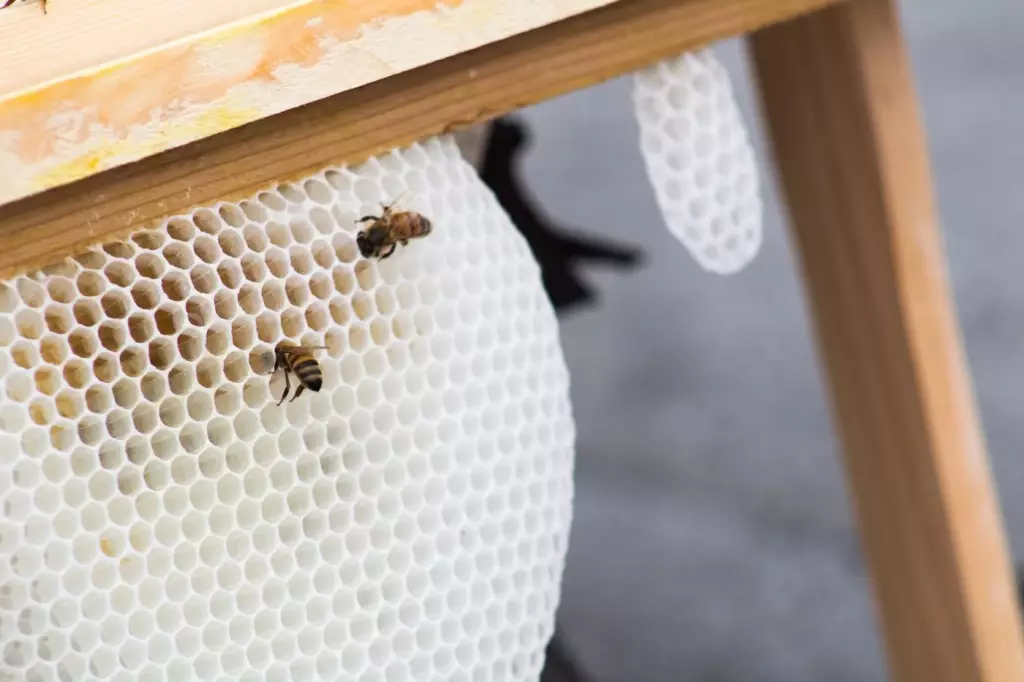
How do bees make perfect hexagons?
A study by Engineer Bhushan Karihaloo in July 2013 found that the culprit for the hexagonal-shaped combs made by the bees was heat. As the bees get to work, they generate heat, which melts the honeycomb's wax, flattening the walls and creating the perfect hexagons.
In the experiment, a tool called a smoker used to collect honey was employed. It emits smoke, which repels the bees from the comb. Engineer Karihaloo found that the latest completed comb cells were circular, while the older cells were hexagonal, thus proving that surface tension contributes to the distinct shape of honeycombs.
Do the bees melt the comb on purpose? We don't know. It's yet to be clear whether it is a natural reaction or if the bees emit the heat on purpose to melt the wax. Still, at least now we know how bees make such perfect hexagons.
Do all hives have the same layout?
Generally, beehives all have a similar layout. The bottom of the hive tends to be reserved for the queen cups or cells. The middle portion is for the worker and drone brood cells. Typically, the top of the hive will have a honeycomb.
Can bees survive without a hive?
Without shelter to protect them from natural elements and to store their food, the bees will not survive for long. This is why hives play a vital role in their survival.
